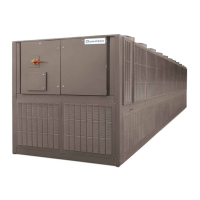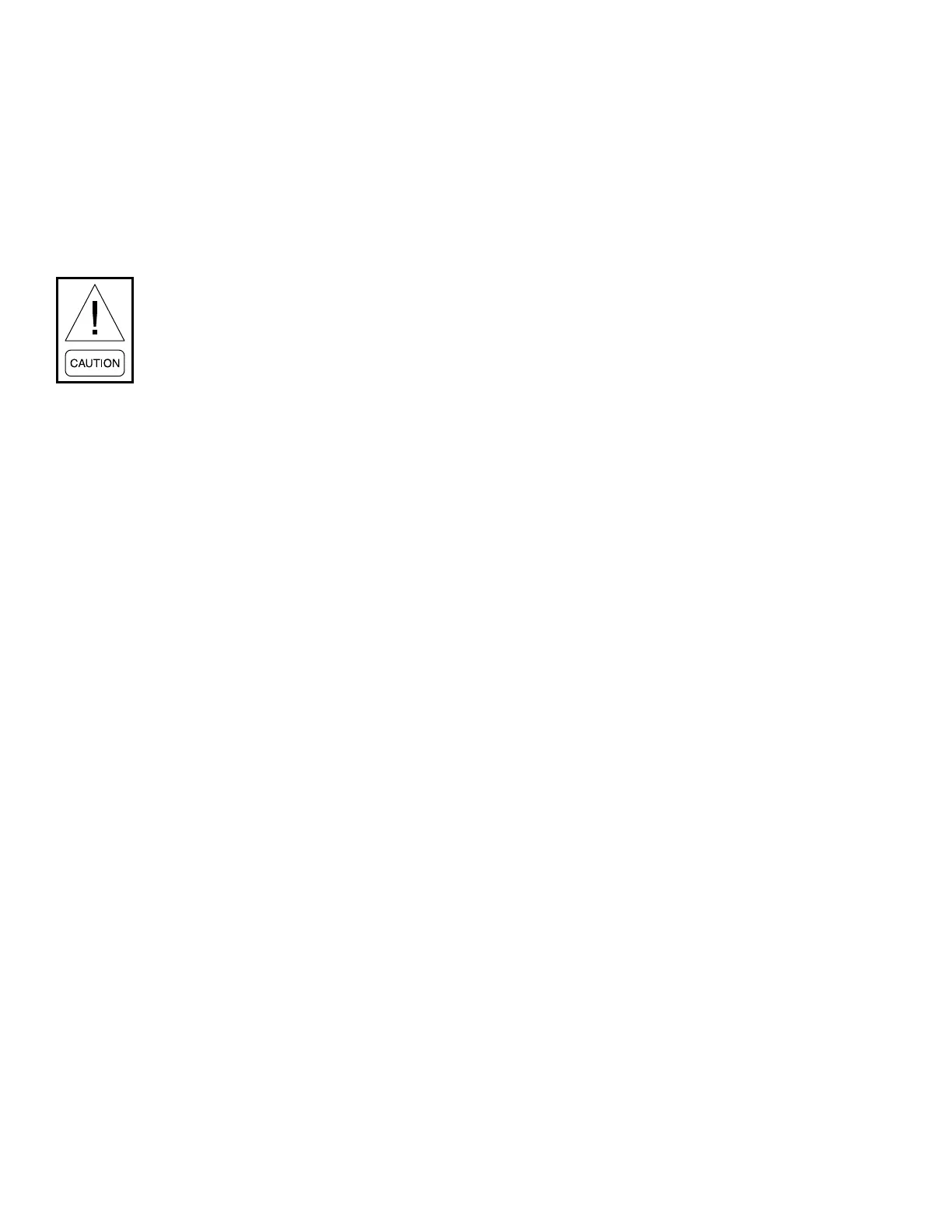QUANTECH
150
SECTION 9 - MAINTENANCE
FORM QTC4-NM1
ISSUE DATE: 4/2/2018
REFRIGERANT REMOVAL, EVACUATION AND
CHARGING A QTC4 CHILLER
Refrigerant Removal
The QTC4 utilizes a flooded evaporator. Extreme care
must be taken when removing refrigerant to prevent
damage to the evaporator and the chiller. Carefully
review the following caution below before proceeding
with the recommended process.
Incorrect removal of refrigerant will
result in catastrophic freeze damage to
the evaporator and possible additional
damage to other chiller components.
Whenever there is water in the evaporator,
the chilled liquid pumps must be ON and
circulating liquid through the evaporator
above minimum recommended ow rates.
When liquid refrigerant is being removed,
monitor the pressure and do not allow the
pressure to drop below the freeze point
of the chilled liquid owing through the
evaporator until all liquid refrigerant has
been removed from the evaporator and
only gas remains. Once all liquid has
been removed, the remaining refrigerant
vapor can be removed while allowing the
pressure to drop below the freeze point
with the pump circulating liquid through
the evaporator.
To remove refrigerant from the evaporator, follow the
procedure below:
1. Turn the chilled liquid pump ON and assure the
ow is above the minimum recommended ow.
2. Assure all manual valves in the system are open.
Open Condenser Drain and Economizer Feed
valves to 100% in the service mode.
3. Connect the recovery unit and a manifold gauge
to the liquid line feeding the eductor. There may
be a valve in the line or a Schrader tting on the
eductor lter for this purpose.
4. Connect the recovery unit to a recovery cylinder
sitting on an accurate scale. Turn the recovery
unit ON and observe the liquid refrigerant owing
from the line into the cylinder. The ow of liquid
should be obvious.
5. Monitor the pressure gauge to assure that the pres-
sure does not drop below the freeze point of the
chilled liquid. Throttle the ow as needed with the
manifold gauge valves to prevent pressures from
dropping below the freeze point.
6. Continue to remove the liquid refrigerant while
observing the ow and the pressure. Note the
charge in the system based on the nameplate data
to determine when the charge removal is nearly
complete. Monitor the weight of the recovery
cylinder to determine when the cylinder is full.
Change the cylinder as needed.
7. Continue removing refrigerant until liquid is no
longer observed owing in the manifold hoses.
8. Once the liquid is removed and no longer visible
in the hose, the remaining gas can be pumped
out with the recovery unit while the pressure is
allowed to drop to 0 barg (0 PSIG).
9. Servicing may now be performed on the system
as needed.
Evacuating a System
To evacuate a system, follow the procedure below:
1. Turn the chilled liquid pump ON and assure the
ow is above the minimum recommended ow.
2. Assure all manual values are open. Open the Con-
denser Drain (Flash Tank Feed) and Economizer
Valves in the Service Mode to 100 %
3. Connect vacuum hoses to as many points as pos-
sible. Be sure that at least one connection is made
on both the high and low side of the piping. A con-
nection to the evacuation tting on the compres-
sor is also recommended. Evacuate the system to
a minimum of 500 microns. Close the valves at
the evacuation points and assure the pressure in
the chiller does not rise more than 50 microns in
10 minutes. Check for leaks if the pressure rises.

